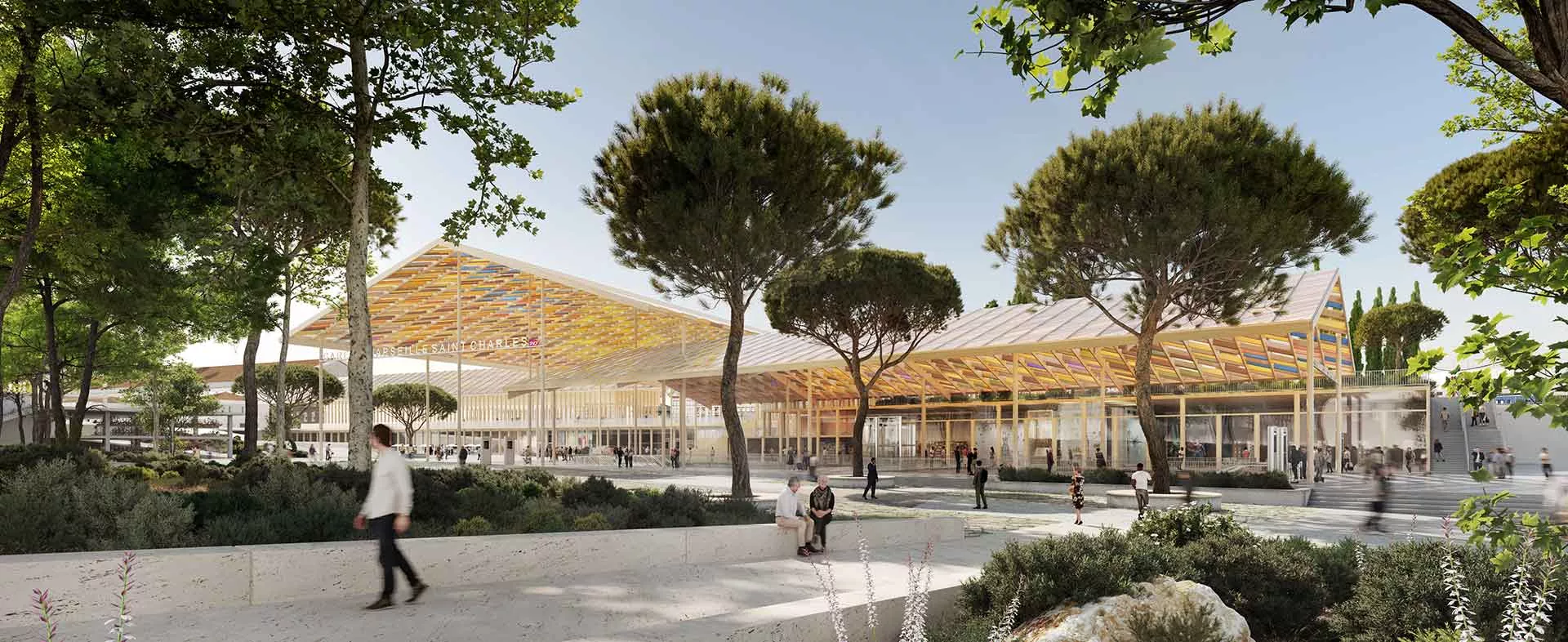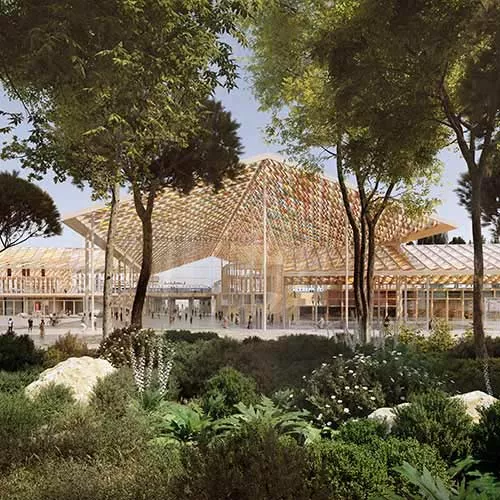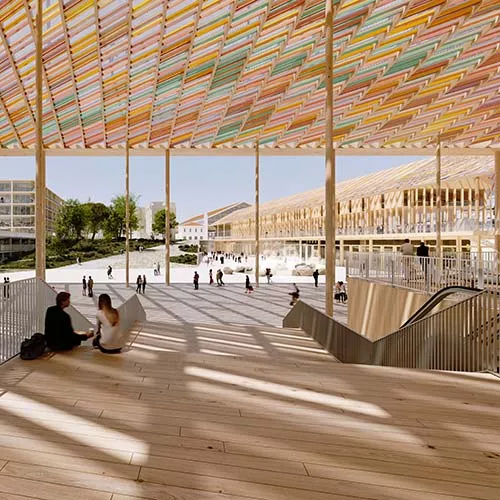
Halles Saint-Charles: shaping the future of mobility in Marseille
Developed by SNCF Gares & Connexions and its subsidiary AREP, in tandem with landscape design studio Atelier Roberta, this project is a crucial component of the new Provence Côte d’Azur line (LNPCA). It includes the construction of a tunnel crossing under Marseille—a prerequisite to creating a metropolitan regional express service (SERM) for the Greater Aix-Marseille-Provence area.
A core feature of the new Provence Côte d’Azur line
An iconic project
On 2 December 2024, the partners behind the new Provence Côte d’Azur line unveiled the architectural project for the extension of Marseille Saint-Charles station. The new station will be a major gateway to the region and the linchpin of its rail system. Known as “Les Halles Saint-Charles”, it’s the brainchild of SNCF Gares & Connexions, its subsidiary AREP, and landscape design studio Atelier Roberta.
Learn more about the expansion of Marseille Saint-Charles station

A new tunnel crossing under Marseille
Les Halles Saint-Charles is part of large-scale works that will transform the Marseille rail node by 2035. These include an 8 km tunnel beneath Marseille linked to Saint-Charles station.
But that’s not all. Along with the Les Halles Saint-Charles extension, surface tracks will be revisited and the coastal lines linking Marseille Saint-Charles and L’Estaque will be upgraded to:
- make trains much more punctual
- increase the number of trains, with 1 TER regional train serving Aubagne, Miramas and Aix-en-Provence every 15 minutes
- introduce direct east-west services across the metropolitan area, eliminating the need to change trains at Saint-Charles station
- save 15 to 20 minutes for each of the over 20,000 trains that pass through Marseille every year
The new Provence Côte d’Azur line (LNPCA), a core project for the Provence-Alpes-Côte d’Azur region of southeastern France.
Les Halles Saint-Charles is part of the wider project for the new Provence Côte d’Azur line (LNPCA), which is jointly managed by SNCF Réseau and SNCF Gares & Connexions. LNPCA is set to transform commuting between the metropolitan areas of Aix-Marseille, Toulon, and Nice and the Côte d’Azur, while bolstering connections for long-distance national and European services. By 2035, this massive railway project will boost train capacity by 66% and attract 50% more passengers—with 62% opting for rail travel over road. The project also includes modernizing infrastructure on the Marseille-Vintimiglia line, and building or redesigning 9 multimodal stations.
Creating a metropolitan regional express service for Greater Marseille
This operation is a crucial step towards creating a metropolitan regional express service (SERM) for the Greater Aix-Marseille-Provence area. When it starts operating in 2035, the station will welcome 50% more passengers—that’s nearly 19 million riders a year.

8 km
of tunnel excavated

4,300 sq m
of green spaces created

5,000 sq m
of solar panels installed to generate renewable energy
A multimodal hub that’s a gateway to the city
Multimodality—central to the project’s design
The enlarged Saint-Charles station will be easily accessible from neighbouring districts and integrate fully with its immediate surroundings, which are being designed as part of the urban development project. Entrances on all sides will create a passageway between the northern neighbourhood of Belle de Mai and the southern neighbourhoods of Saint-Charles and Chapitre. The station will connect with all urban public transport networks—the Saint-Charles metro hub (lines M1 and M2), the new light rail line between Belle de Mai and downtown Marseille, the bus and coach station, and cycle paths. Together these will make it major multimodal hub for the region, as well as for France and Europe.

SNCF Gares & Connexions in the driving seat
As both prime contractor and project manager, SNCF Gares & Connexions worked with government agencies—the French State, the PACA region, the Greater Aix-Marseille-Provence area, the French département of Bouches-du-Rhône and the city of Marseille—to define the extension’s main objectives. Together they decided the new station must be:
- easy to recognize and navigate, and aesthetically consistent with the first 2007 extension
- a pleasant, user-friendly space with new services for travellers
- a larger multimodal hub, with attractive public spaces offering easy access to the city, plus and more and more efficient intermodal transport options
- identifiably Mediterranean, with public spaces filled with abundant local vegetation that’s also climate-resilient.
This project is a remarkable example of how our project management and AREP teams work hand in hand with the region (...). The future station will showcase the region’s Mediterranean identity and serve as one of its main gateways on the new Provence-Côte d’Azur line.
Managing Director of SNCF Gares & Connexions, and Deputy Managing Director of SNCF Group in charge of Transformation
A climate-resilient station that fits into its surroundings
Three new urban spaces
The project features 3 new complementary urban spaces for travellers to enjoy: the Voltaire Garden Square, the Wind Garden and the Place Crimée. In all, 4,300 sq m of green areas will be created.

A climate-resilient multimodal hub
The project addresses the major challenges posed by the green transition and the need for climate change adaptation. It adheres to the Energy Material Carbon Climate Biodiversity1 (EMC2B) policy developed by SNCF Gares & Connexions and AREP. And notably includes:
- “cool islands” featuring an abundance of plants
- as many green areas as possible with in-ground plants, especially local varieties
- innovative ways of managing rainwater
- naturally ventilated bioclimatic canopies and covered walkways to protect people from bad weather
- renewable energy generated by solar panels
- sustainable, low-carbon materials